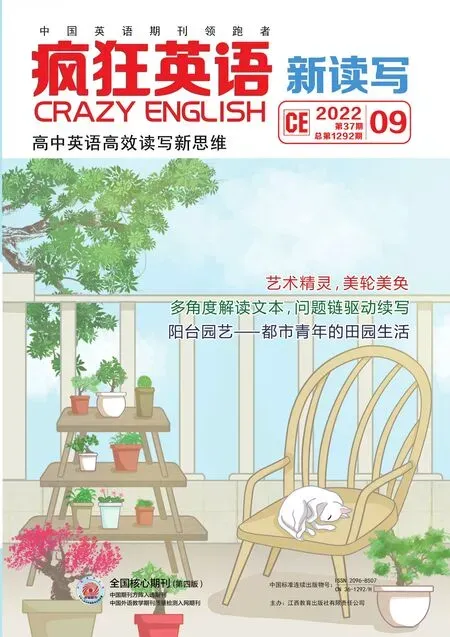核雕文化,非遗传承
2022-11-22甘肃王旭红
甘肃 王旭红
核雕因在果核上雕刻而得名,具有很高的艺术价值,已被中国列为非物质文化遗产。
Zhu Mengjia has found a new world in the smallest and unlikeliest of places: fruit pits. The 29-year-old, from Guangfu Town in Suzhou, East China's Jiangsu Province, has been sculpting ingenious creations out of the challengingly hard, tiny and rugged pits over the years.
With her touch, as if by magic, vivid images of animals, plants, boats and garden views emerge. Examined using a magnifying glass, the delicate sculptures on the fruit pits still look vivid, confirming her flawless technique. “I usually spend five hours a day working on them,” Zhu says.
Guangfu fruit pit carving was named a national intangible cultural heritage in 2008.Earliest examples of the art form date back to the Song Dynasty (960—1279). The Chinese folk handicrafts enjoyed rising popularity in the Ming (1368—1644) and Qing(1616—1911) dynasties, when the royal families wore the carvings as an aristocratic decoration. The pits of peaches, apricots, walnuts, and Chinese olives are the most prevalently used, and upon which minute images of Buddhas, nature, or the Chinese zodiac that are said to repel evil spirits, are carved.
“Suzhou fruit pit art has absorbed the artistic essence of stone, jade, wood, bamboo and micro carving,” Zhu says. “On the premise of maintaining the shape of the fruit pits,the carvings stand out for their precision, fineness, strangeness and cleverness, presenting unique local characteristics,”she says. “As a young artisan,I'd like to create my own world in the small space provided by the fruit pits.”
Reading Check
How much do you know about fruit pit carving? What do you think of it?
__________________________________________________
